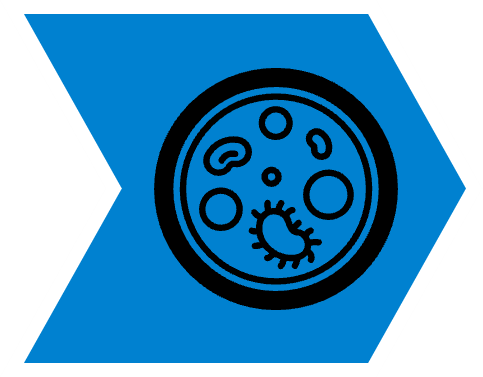
Decolonize Patients
This page serves as a central hub for the tools and resources for decolonization, provided by the Toolkit for MRSA Prevention in the ICU and Non-ICU. These resources have been developed to equip and empower healthcare teams with the knowledge and tools necessary to initiate and sustain successful decolonization programs.
Universal Versus Targeted Decolonization
Before implementing decolonization, you will need to decide whether to implement Universal Decolonization or Targeted Decolonization. These strategies are outlined below.
Universal Decolonization:
- is a strategy wherein: All patients in a specific hospital unit are treated with nasal decolonization for 5 days and decolonized with CHG bathing daily throughout their stay in the unit.
- is recommended for use in ICUs. This includes all adult and pediatric ICUs, though the evidence is stronger for adult ICUs.
- is sometimes appropriate for use in non-ICU units, such as step-down units and medical, surgical or other units with high acuity patients (i.e., Oncology)
- should be considered for units with a high percentage of patients who have an increased MRSA risk due to the presence of central lines, midline catheters, PICC lines, or lumbar drains.
- is appropriate to use in hospital units with high MRSA acquisition rates, regardless of patient acuity or presence of medical devices
Targeted Decolonization:
- is a strategy wherein: Only targeted patients at higher risk for MRSA infection in a specific hospital unit are treated with nasal decolonization for 5 days and decolonized with CHG bathing daily throughout their stay in the unit.
- is recommended for use in non-ICU units where some, but not all patients are at higher risk for MRSA infection due to having devices such as central lines, midline catheters, PICC lines, or lumbar drains.
- is appropriate to decolonize patients identified as being infected or colonized with MRSA using an active or passive MRSA surveillance strategy.
This information can be also downloaded as a standalone document:
Which Type of Decolonization Would Work Best in My Unit? (DOCX, 500 KB)
- Tools & Resources for Decolonization: First Steps, Readiness, and Pre-Launch
This section covers Readiness and Pre-Launch. It is recommended you start with this section. This section lays out the steps necessary for launch, from key early decisions to pre-launch activities. - Tools & Resources for Decolonization: Protocols
This section provides sample unit and nursing protocols on bathing with chlorhexidine gluconate (CHG) and conducting nasal decolonization. You may wish to adapt these for use in your program. - Tools & Resources for Decolonization: Staff Training Materials
This section contains training and educational materials designed to assist in the implementation of decolonization. - Tools & Resources for Decolonization: Patient Educational Resources
This section contains resources for patients to educate them on the importance of decolonization.
Note
Materials are adapted from "Universal ICU Decolonization: An Enhanced Protocol" and the "Toolkit for Decolonization of Non-ICU Patients With Devices."



